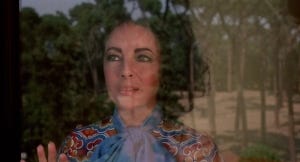IDENTIKIT (A.K.A THE DRIVER’S SEAT)
Screaming crying throwing up: Reaction Film from Elizabeth Taylor to Bobitza
‘Oh she is so me.’
‘Her job is ritual suicide.’
‘She clogged the mother toilet when she was slayed.’
Mr Kuleshov is a very powerful man, whose effect on audiences is unparalleled. His suggestion that the camera can create a psychological as…
Keep reading with a 7-day free trial
Subscribe to Cinema Year Zero to keep reading this post and get 7 days of free access to the full post archives.





